Understand Why You are Going to a Show
One thing we have noticed in pretty much all the industries we’ve played in is that CEO’s, CFO’s and much of senior management has a hard time justifying the costs of trade shows, as they should. Many of them ask, what is the value of the shows and what is the ROI we can expect?
For those of you who are veterans in the trade show world, you could look at the history of shows past to get a baseline outcome prediction, however what one should also be considering is how to improve the outcome and how you can get more clarity on the value of attending a show.
To move through this process, what we do for companies is help them get alignment with the key stakeholders and the marketing team to not only understand the potential tangible and intangible value, but also to understand the pre-and post foundational work that needs to happen so you can truly measure the value. Part of this involves understanding that a company needs to have the right tools in place such as a CRM system and solid show processes that ensure a better way of tracking the value.
Remember, CFO’s need to see the tangible bottom line, however if they are looking at long term value they should also be reminded to look at the intangible. The intangibles represent the majority of the market value of the company – first being the brand and then knowledge, processes and market position.
If your companies’ senior management only values the tangible return from shows, it’s good to know as your strategy for the show will have to adjust or some educated persuasion is in order on your part. Also, you should make sure that the VP of Sales is on board and understands the processes you need to put in place to measure your show outcomes, because if they don’t, you’ll have a very difficult time showing anything.
So what are some of the reasons a company might attend a trade event?
- Brand Awareness
- which helps with all of the below and visa versa
- Sales
- Meetings
- with potential and existing clients
- Lead Generation
- PR Opportunities
- New Product Launch
- New Program Launch
- Investor and Analyst Meetings
- Competitive Research
- Education and Speaking Opportunities
Take Action in Phases
PHASE I : CREATE SHOW GOALS & OBJECTIVES
Setting show objectives absolutely can not be done by a trade show manager alone. Show objectives need to be part of higher level business objectives so everyone can be on board and held accountable for the success and cross functional processes.
Goals may include any or all of the reasons to attend the show, with specifics attached. For example:
One goal could be to further brand awareness with pre show ads, email campaigns, post show followup, show meetings, leadership keynote presentations, and memorable booth branding. Of course these goals need to be taken a step further to become meaningful. By noting how many people you want to reach with your ads and campaigns, how many times they will be run before the show and what channels or platforms will be used, what the call to action is or what you want people to do after seeing these ads or emails is going to shape these goals into something you can actually compare to the results after the show. Likewise, setting specific agendas and desired outcomes for all of your show meetings with sales, analysts, media, investors and partners.
Another common goal might be to launch a new product or product suite or even unveil a brand update by creating presenters and sell sheets for press kits, booking press and publication opportunities, participating in education tracks and developing memorable in-booth education. Again, to make turn these action items into measurable goals, it’s important to set specific targets and processes to measure the audiences you’re reaching.
Let’s say your goal is to bring in 1500 leads. Flesh out this goal by being targeted about who you want your leads to be, get down to all the specifics and be realistic. Of course all leads are valuable, but having a good lead ranking system / CRM system in place, is going to be really helpful in deciphering what’s a hot sales lead and what’s a future opportunity.
Or, perhaps your goal is simply to generate more sales. Then it’s important to set specific targets for total revenue generated by new leads to sales and nurtured leads to sales.
Whatever your goals are, they should be relevant to your marketing plans, valued by your management and of course within budget.
PHASE II : DEVELOP THE CREATIVE BRIEF
The creative brief should encompass all the creative for the entire show, pre show and post show. We suggest including budgets in the creative brief to keep things moving. Once your brief is signed off, you can move on the the creative concepts, sign off and production.
PHASE III : CREATE THE SHOW PROCESSES
Creating show processes that are aligned with goals and objectives is key. This means; educating all the participating teams on the processes, roles, events, launch information, keynote topics and schedules and informing everyone involved of the processes which are key to meeting the goals and how the event success is being measured.
Don’t forget to make sure that the in-booth walk through and any updates to the schedules or announcements are completed so there are no last minute surprises.
PHASE IV : ANALYZE THE SHOW RESULTS
Once all the post show efforts are complete it is time for the last step in your plan of action: the follow-up report.
Setting up a scorecard is a good way to highlight what areas need work or where there were lost opportunities, and the teams that really knocked it out of the park. It’s always important to note that the full ROI, depending on your companies sales cycle, may require a phased post show report for the tangible ROIs.
Good Luck!
Kind Marketing works with exhibitors on strategy, exhibit design and full show production.
We’d love to help you with your next event!






